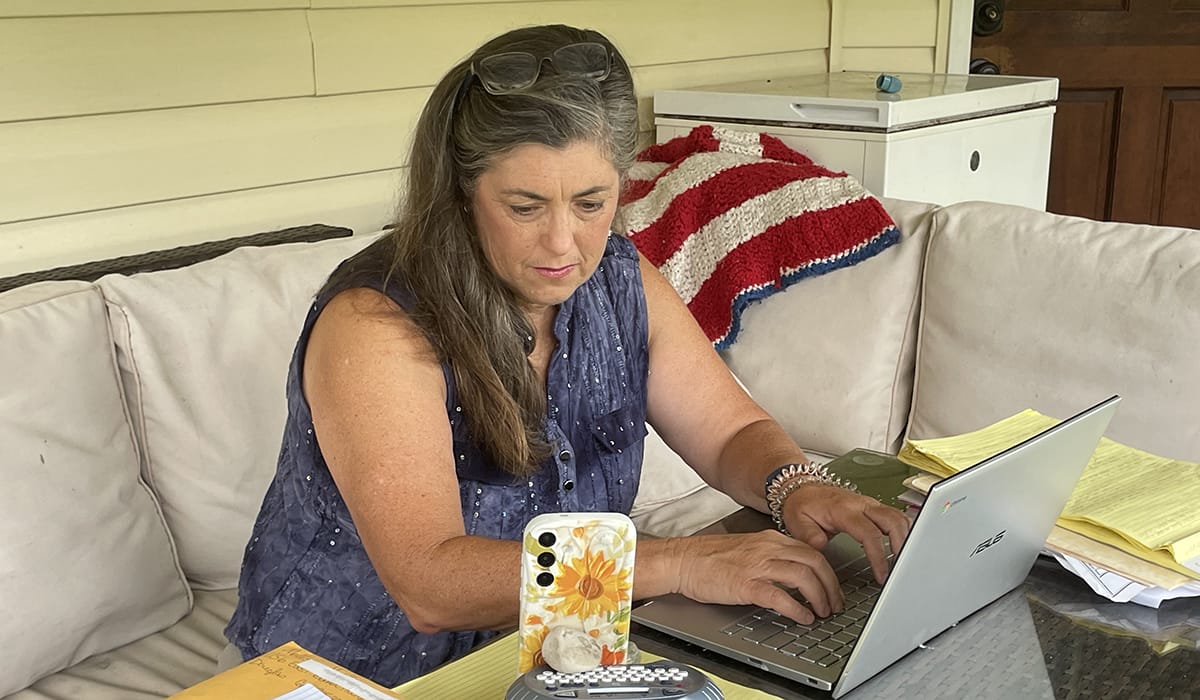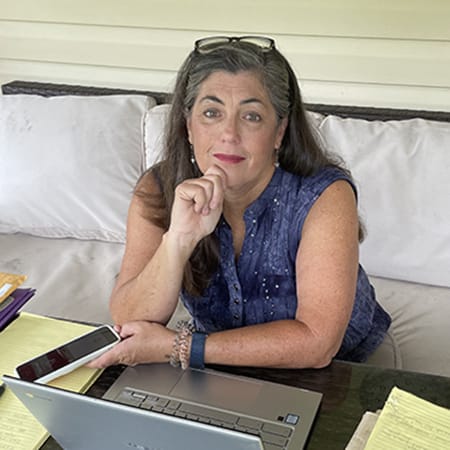From Global Crises to Local Relief: A Lifeline in Emergencies

Meet Daily Point of Light Award honoree MaryStuart Hoppmann. Read her story and nominate an outstanding volunteer or family as a Daily Point of Light.
When disaster strikes — whether it’s halfway around the world or across the street — MaryStuart Hoppmann is often the voice in the chaos, calmly guiding people through crises. “You would be surprised how often someone calls from an active disaster zone saying, ‘I really need to find person X.’” she shared. “And I find that person for them!”
As the strategic development coordinator with Fill the Needs — a nonprofit coordinating disaster relief and humanitarian aid across the U.S. and internationally — MaryStuart serves as “Command Central 2.0,” bridging the gap between those in crisis and the people who can help them.
“Chef Amy is Command Central. I fill in the gaps. Amy cannot be in multiple meetings at once or talking to multiple people at the same time. So I fill those needs and anything else that I can see is needed or am asked to do by someone in our network,” MaryStuart said.
Fill the Needs founder and president Amy Sins says that MaryStuart’s presence is indispensable.
“There are days during a chaotic disaster where she is my right-hand woman. She knows enough about what I do every day with this organization that she could jump in and take over and keep it afloat for a few days,” Amy said. “Her impact is as big as her heart — gigantic — and I couldn’t do it without her.”

MaryStuart’s service stretches from evacuating endangered students and women from Afghanistan to supporting families in Ukraine and aiding disaster-hit communities across the U.S. “What counts most is showing up in the way people need,” MaryStuart said — whether that means unloading supplies at a distribution point, tracking road closures when cell towers are down or offering a listening ear to a fellow volunteer serving in their own impacted community.
Her connection to Fill the Needs began when her daughter befriended a young Afghan woman at a student conference. After the Taliban takeover, urgent messages poured in asking for help evacuating the woman’s family. What began as one desperate plea soon evolved into a networked effort to evacuate students and families in danger.
“I was connecting with people that were threatened because of their personal status. They were female, or they were members of minority groups in Afghanistan, and there wasn’t a road to the U.S. for them.” From there, MaryStuart began coordinating logistics, forging connections with aid partners and finding solutions in situations where no clear path existed.
Through those efforts, these Afghan refugees were able to find safety in countries including Pakistan, Spain, France, Bangladesh, Ireland and the U.S. Among them was a young named Sayed, now living in France with his sister.
In U.S. disasters, MaryStuart works the phones, maps and message boards, guiding responders through hazardous road conditions when GPS and cell towers are down. She has coordinated everything from delivering hay to farmers in North Carolina to sending trucks of firewood to communities reeling from hurricanes.
Her dedication also extends to overlooked communities in disaster planning.
“Right now, I am working on building a resource list for disabled disaster survivors. Parents with medically fragile children, people with autism, those on oxygen or ventilators, need extra support before, during and after disasters but often do not know where the help can be found,” she said. To expand the reach of these resources, she’s also researching grant opportunities and funding sources that could allow Fill the Needs to serve a wider area.
MaryStuart measures her impact less in statistics and more in personal moments, like the time she befriended a panicked U.S. veteran and helped her brother, his Ukrainian wife and their newborn baby find a doctor, get medical treatment and evacuate during the Russian invasion. Other times, the impact is less visible but equally profound — listening, consoling and advising fellow volunteers so they can continue helping their communities.
Her days can stretch long — sometimes 18 to 20 hours during a major disaster. Even when personal challenges arise, she finds a way to serve. “Right before Helene, my college daughter had an accident that required my immediate travel to her school in upstate South Carolina… In the middle of her emergency doctor visits, MRIs, etc., Hurricane Helene hit. We were in a hotel (fortunately one with a generator) as I was juggling meetings, relief supplies, and more with her emergency appointments and medical needs. It was wild and crazy.”
Her advice to others who want to serve is simple: don’t overthink it.
“Don’t make it hard,” MaryStuart said. “Volunteering sounds like such a big thing, but you just need to meet the needs that come to you.”
It’s a philosophy she sees reflected in The Starfish Story — a parable about a young child tossing stranded starfish back into the ocean, one by one. When an old man points out there are too many to save them all, the child simply replies that it matters to each one.
“You can’t save the whole world,” MaryStuart said, “but you can change the whole world of one person.”
Do you want to make a difference in your community like MaryStuart? Find local volunteer opportunities.
